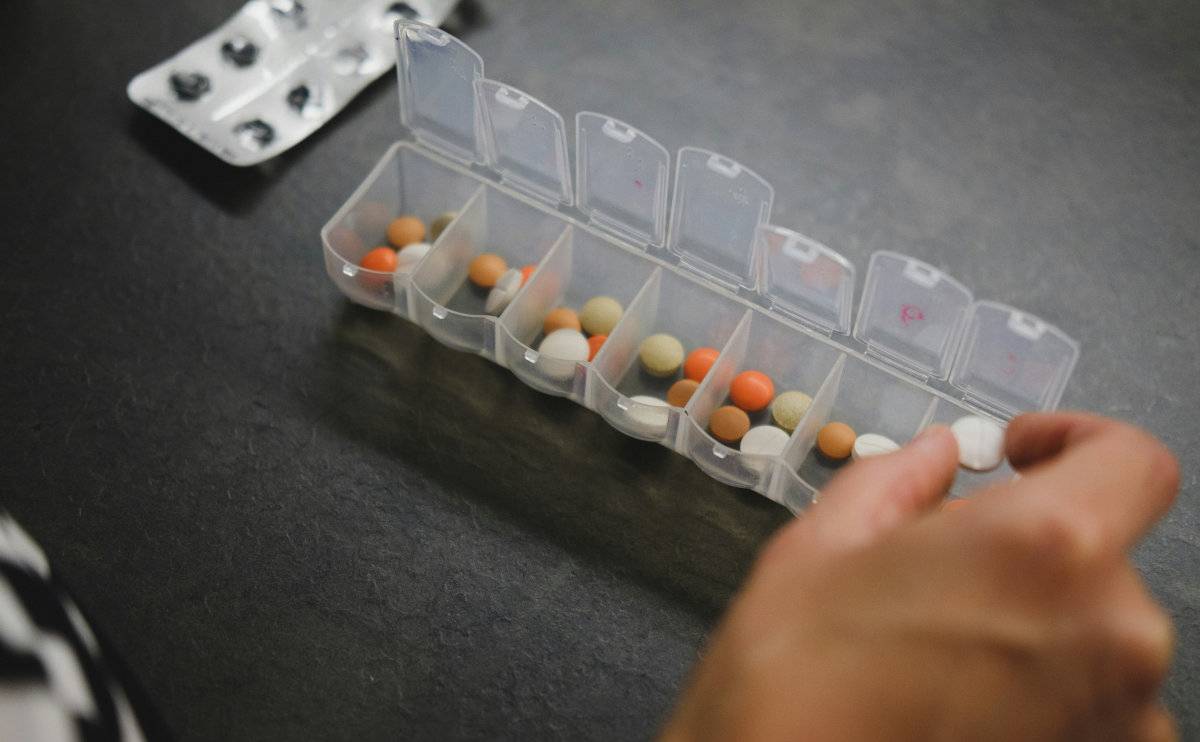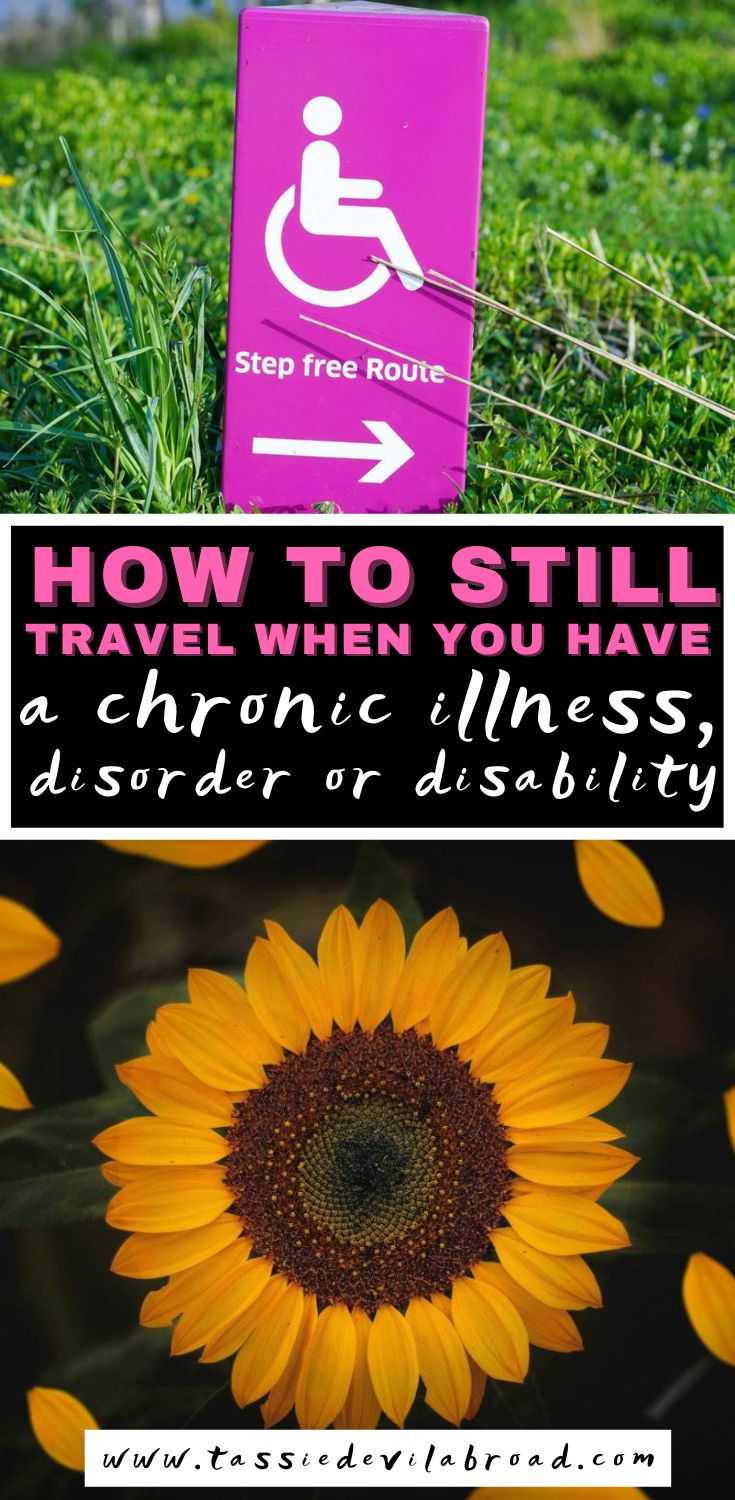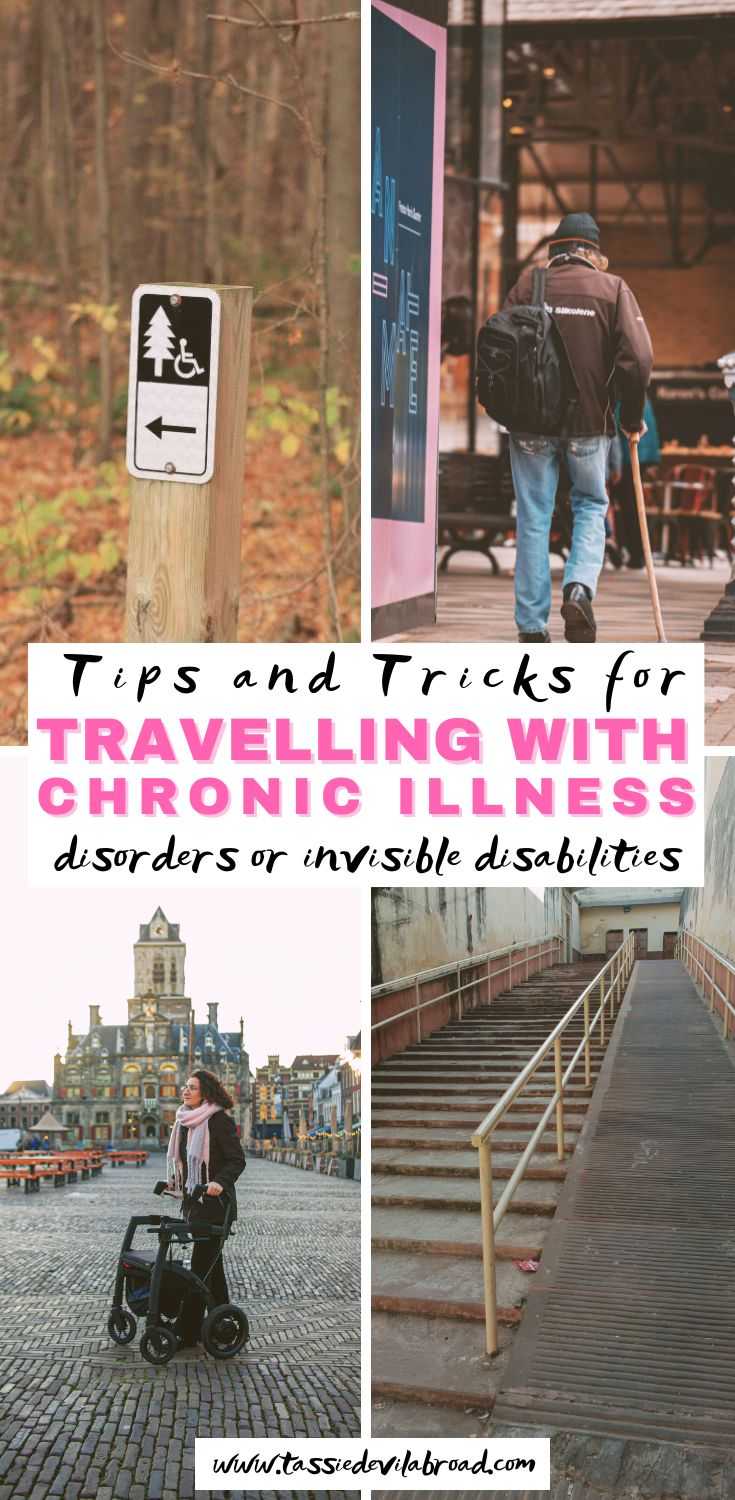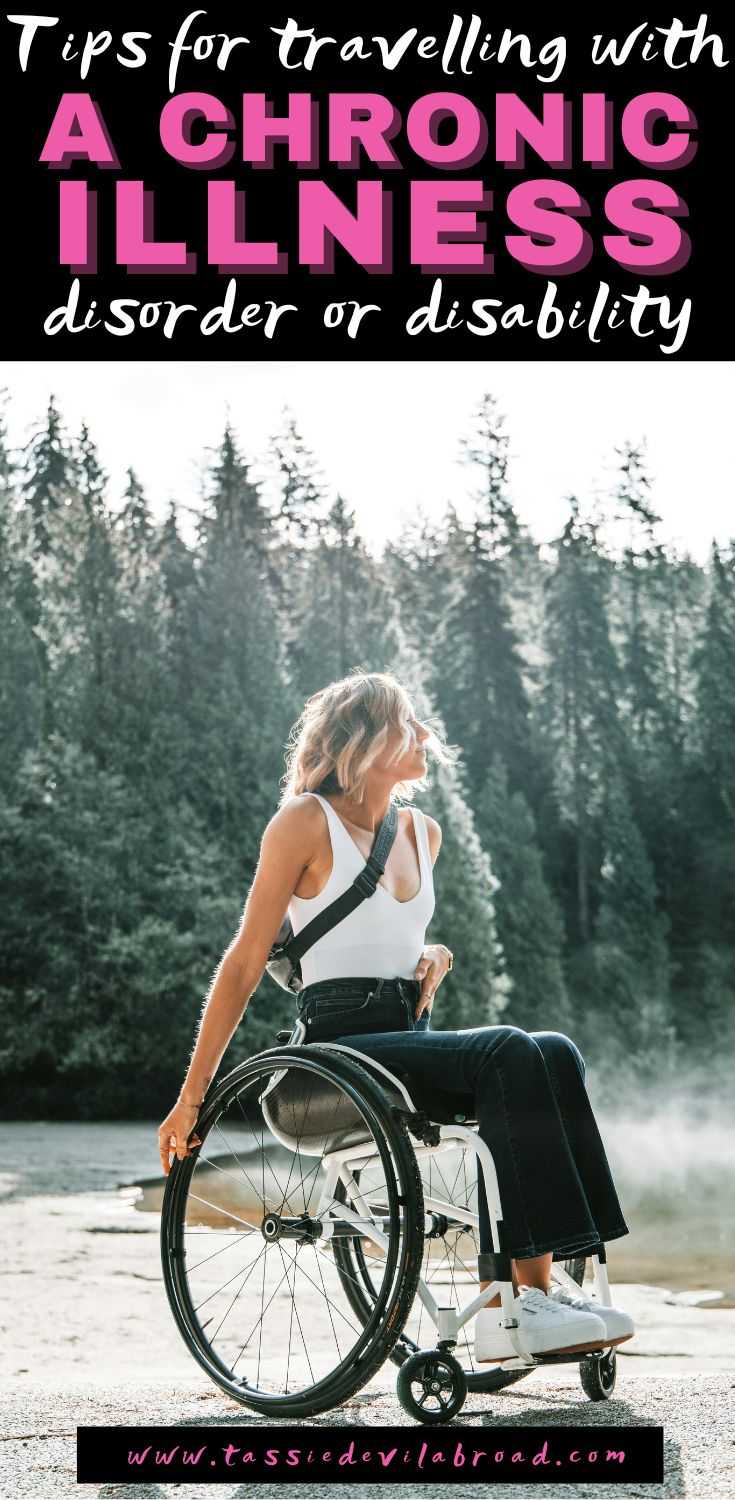Travel is one of those things that requires some privilege to be able to do. That might be the privilege of having enough money and free time to travel, or even having passport privilege, but it also includes the privilege of being able to travel when your own body creates a barrier. There are lots of other resources and blogs out there for traveling with the kinds of disability that require a wheelchair, but since that is not my personal experience (at least not yet) I’m not really going to be talking about that here. But I do have experience with how developing a chronic disorder has impacted my ability to travel and how I have managed that. Being ill or having chronic pain doesn’t mean you can no longer travel, you just might need to travel differently from how you used to. Read on for my tips and tricks for how to travel when you can’t travel when you have a chronic illness, disorder or invisible disability.
My Story

When I started this website, I was 30 years old, healthy and mobile. I had moved from Australia to London, and then I moved from London to the Netherlands to live with my Dutch partner (who is now my husband). While living in the Netherlands, we travelled around Europe as much as possible, and also back to Australia whenever I could. While long travel hours in cars or planes could be uncomfortable, I rarely had to think about the barriers that disabled people face when trying to travel.
During the pandemic, I started to experience weird aches and pains, plus overwhelming fatigue. Over a period of about a year, I underwent a range of tests and saw different doctors and specialists before eventually being diagnosed with fibromyalgia, which is a chronic pain disorder. The main symptoms I experience from fibromyalgia are widespread almost constant pain throughout my body, fatigue (even after a ‘good’ night’s sleep) and hypersensitivity to certain sensations (plus quite a few more symptoms as well).
I was referred to a really great chronic pain specialist who helped me learn to manage living with this disorder (which isn’t curable and currently has no real medications to treat it) but my life has changed because I am no longer able to do as much as I could before. This also means I can’t travel as much or in the same way that I used to, because too much walking or even sitting (like during a long-haul flight between Europe and Australia) causes me really awful pain, illness and fatigue.
Over the past few years, I have learned that I have to make allowances for my body not being able to do everything that it could before, but that doesn’t mean I can’t travel anymore, it just means I’ve had to learn to travel differently. And if you are someone who’s also trying to learn how to travel with a new chronic illness, disorder or invisible disability, I’m going to share what I’ve learned so that you can hopefully continue to travel as well.
A Note on Invisible Disabilities

While I don’t think it would be easy at all to have the kind of disability which requires a wheelchair or other mobility device, the one advantage that needing that kind of thing gives you is that other people can see that you are disabled and have different access needs (whether or not you get them is another story, of course). But having fibromyalgia or another invisible disability (or chronic illness or disorder) means that often people don’t even realise that you might need help or be unable to do things like stand for a long time or climb stairs.
Luckily, there’s an international programme called the Hidden Disabilities Sunflower, which aims to help people understand that someone might have a hidden disability. If you wear a sunflower lanyard, wristband, pin or patch, this can be a subtle way to let others know that you have “a disability or condition that may not be immediately apparent – and that you may need a helping hand, understanding, or more time in shops, at work, on transport, or in public spaces.” I haven’t yet bought myself a lanyard or pin, but it is something I have been thinking about, as I do sometimes find I need to sit down or rest when others might not realise, because I don’t use any mobility aids or “look sick.”
So if you ever see someone wearing a lanyard with a sunflower pattern, or a sunflower pin or wristband, just be mindful that they may need a little more help or understanding as they navigate the world. And if you also have an invisible illness, then you might like to buy your own items to show that as well.
But for now, here are my tips for travelling with a chronic illness, disorder or other disability!
1. Travel Slow

Slow travel is a great way to travel even if you don’t have a disability-based reason to do it, as it’s better for the environment and local communities. But the main difference between how I used to travel and how I travel now is that I can’t cram in everything I want to do without breaking things up a little. On our most recent trip to Australia, I made sure to book flights with a very long layover in Singapore, so that I had time to properly rest. We even booked an airport hotel room for a few hours so we could sleep in a proper bed, shower, etc. This was still quite a hard trip as it was so long, so next time we’re thinking we might even stay a day or two in Singapore in order to break the trip up.
I’ve also found that I can’t cram as much into a day as I used to be able to, so I’ve had to learn to just plan one major sight or event for the morning and one for the afternoon or evening, so that I then have time to rest in between. Obviously, you need to learn what your own limits are and then make sure to factor in scheduled break times so that you don’t overdo it. Shorter trips can also help ensure you don’t end up being so tired that you need another holiday to recover from a holiday.
2. Make Sure You Have Travel Insurance!

I have never travelled without the safety of travel insurance and always urge others to do the same, but if you have an ongoing chronic illness or disorder then it’s even more important than ever to make sure you are protected if things go wrong. Luckily, I haven’t had to use my travel insurance since being diagnosed with fibromyalgia, but in the past I’ve needed it when getting ill while travelling and having to pay huge fees to see a doctor in a hotel, which was then completely reimbursed to me through my insurance. So make sure you have travel insurance no matter where you go, just in case you need it.
3. Plan Ahead

One of the biggest tips I can give you is to make sure you do plenty of research and plan ahead before you travel. Of course, this is always a good tip, but when you have extra things to think of, like accessibility or rules around medication, then it’s more important than ever.
Before I travel now, I make sure to plan out all the things I want to see and then narrow down the highlights or must-sees so that I know what to prioritise if I end up needing extra rest time or am even unable to go out on a travel day. I also plan in rest time and make sure to research accessibility for things like viewpoints, because climbing a whole heap of steps is sadly not something I can really do anymore.
4. Bring What You Need

Make sure you also bring anything you might need with you to make you more comfortable during your travels. Whether that’s a mobility aid, medication, or something else, whatever it takes to make you comfortable and able to enjoy your trip, you need to bring. In some cases, you might need to research different airline policies around certain medical devices, or what a country’s entry requirements are around different medications.
This tip kind of overlaps with the research one, but that also means you may need to make room in your luggage for whatever you need to bring. For example, a CPAP machine to treat sleep apnoea has to be carried within the cabin of an airplane, so it can’t be in your checked luggage, but it should also not count as an extra piece of luggage. But you should always check beforehand and make sure you have a certificate from your doctor or the manufacturer to confirm this.
5. Don’t Be Afraid

Lastly, don’t let fear of pain or fatigue stop you from travelling! When I was seeing the pain management specialist, she mentioned to me that having chronic pain (and I assume other disorders or chronic illnesses) can lead people to not do things they want to do because they fear the pain or other consequences that might come from doing that. But if you don’t do things because of fear then you are only hurting yourself in a different way.
I now do what I can and want to do, but I often factor in rest and recovery time afterwards if I know it might cause a flare-up of my symptoms. If you plan ahead, take everything you need and find ways to mitigate what causes you issues, then you can still travel too. I hope these tips have helped show you how.
Pin Me!
Do you travel with a chronic illness/disorder or disability? Let me know in the comments if you have any more tips for managing travel with these barriers, or pin one of these for your future travels!




Thanks for sharing your story, Kristy! I had no idea about the sunflower, and I will make sure to keep an eye out for that in the future, and always be kind to people, as I never know what they are going through. It is also a reminder that slow travel is great for so many reasons, and this just added another one in my book. xx
Awww, thanks Susanna!